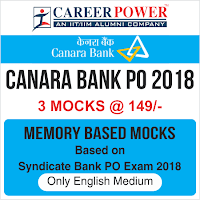Directions (1-5): Study the following information to answer the given questions.
Eight students K, V, Z, H, B, X, E and J are sitting around a square table in such a way four of them sit at four corners while four sit in the middle of each of the four sides. They like different branded laptops i.e. Lenovo, Toshiba, Compaq, HCL, HP, Apple, Sony and Dell. The one who sit at the 4 corners face the centre and others are facing outside.
K who faces the centre sits third to the left of X who likes Dell. The one who likes Dell sits third to the left of the one who likes Toshiba. B who faces the centre is not an immediate neighbour of X. The one who likes Sony sits diagonally opposite to the one who likes HP. Only 1 person sits between X and E who likes Compaq. H sits second to right of V. V faces the centre. Z is not an immediate neighbour of K. The one who likes Lenovo sits opposite to the one who likes Compaq. The one who likes HP is immediate neighbor of E. J does not like HCL.
Q1. Who among the following likes Apple laptop?
(a) J
(b) V
(c)Z
(d)H
(e) E
Q2. Who sits immediate right of the one who likes HP?
(a) V
(b) J
(c)K
(d)H
(e) E
Q3. What is the position of V with respect to J?
(a)Third to the left
(b) Second to the left
(c)Second to the right
(d)Third to the right
(e)None of these
Q4. Who among the following likes Lenovo?
(a) J
(b) V
(c)Z
(d)H
(e) E
Q5. Which is true from the given arrangement?
(a) E faces the outside
(b) V faces outside
(c)J faces inside
(d)K faces the outside
(e)None of these
Directions (6-10): Study the following information carefully and answer the questions given below:
A shopkeeper sold different items viz. Milk, Saffron, Sugar, Rice and Almonds on five different days of the same week starting from Monday to Saturday with one of the days being a holiday(B/W Monday to Saturday). Neither Sugar nor Almonds were sold on Monday. Saffron was sold on the next day after the holiday. Sugar was sold on the previous day of the holiday. There was a gap of two days between the days on which Milk and Saffron was sold. Milk was sold on the next day of the day in which Rice was sold.
Q6. Which of the following is the correct statement?
(a) Milk was sold on Saturday
(b) Milk was sold on Monday
(c) The holiday was on Friday
(d) Rice was sold earlier than Saffron
(e) None of these
Q7. On which day did Sugar was sold?
(a) Monday
(b) Tuesday
(c) Thursday
(d) Friday
(e) None of these
Q8. How many days’ gap was there between the days on which Milk and Almonds was sold?
(a) Three
(b) Two
(c) One
(d) Cannot be determined
(e) None of these
Q9. When was Almonds sold?
(a) On the day previous to that on which Rice was sold
(b) On the next day of the day on which Saffron was sold
(c) Two days after the day on which Rice was sold
(d) Cannot be determined
(e) None of these
Q10. On which day did Rice was sold?
(a)Tuesday
(b) Monday
(c)Wednesday
(d)Thursday
(e) None of these
Direction (11-15): In these questions, relationships between elements is shown in the statements.
These statements are followed by two conclusions. Give answer
(a) If only conclusion I follows.
(b) If only conclusion II follows.
(c) If either conclusion I or conclusion II follows.
(d) If neither conclusion I nor conclusion II follows.
(e) If both conclusions I and II follow.
Q11. Statements: G≤F=L≤J; J≤K=H
Conclusions: I. H=G II. G
Q12. Statements: PU
Conclusions: I. U
II. T>P
Q13. Statements: T>U≥V≥W; XZ
Conclusions: I. Z>U II. W
Q14. Statements: K
Conclusions: I. P>K II. N>O
Q15.Statements: BD≤E
Conclusions: I. B≤E II. C>E





 The Hindu Review October 2022: Download ...
The Hindu Review October 2022: Download ...
 RBI JE Cut Off 2025, Check Previous Year...
RBI JE Cut Off 2025, Check Previous Year...
 Best Mock Test For SBI Clerk 2024-25 Exa...
Best Mock Test For SBI Clerk 2024-25 Exa...




